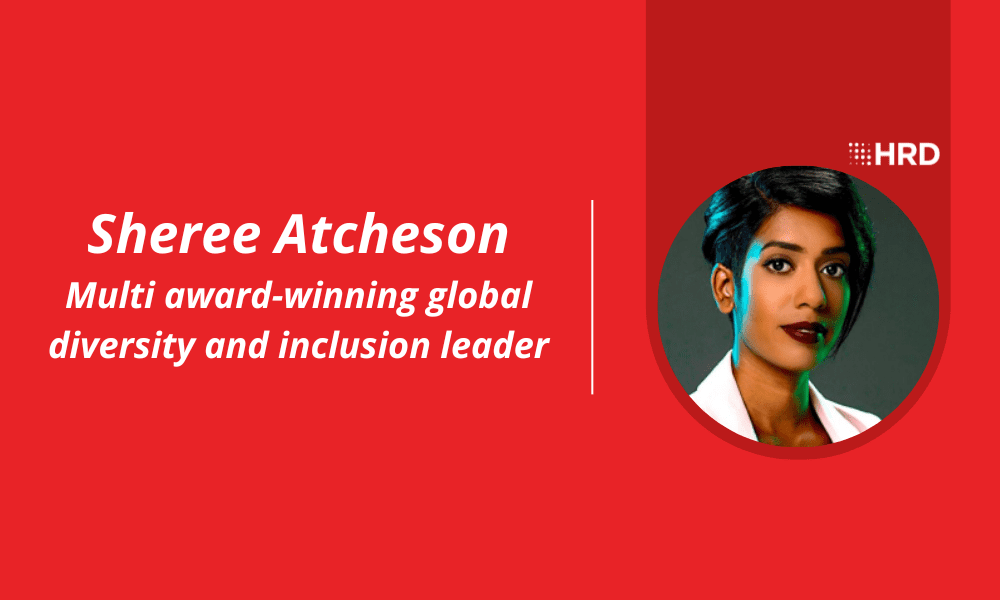Inclusive leadership and the path to DEI success: Q&A with Sheree Atcheson
- 4 Min Read
Sheree Atcheson discusses DEI metrics, creating and implementing global standards, and where she sees the future of DEI going.
- Author: Elizabeth Roscoe
- Date published: Feb 14, 2023
- Categories

DEI initiatives can improve organizational performance, innovation, and overall workplace culture, leading to greater success and social impact.
Sheree Atcheson is a Global Diversity & Inclusion Senior Exec (currently at Valtech, ex. Deloitte, Monzo & Peakon), having worked in many regions developing tailored, data-driven DE&I strategies, with clear goals and lines of accountability to embed success and inclusion that scales.
As a passionate advocate for gaining/retaining women in the industry, in 2013, she launched & led the award-winning U.K. expansion of Women Who Code (womenwhocode.com) the world’s largest non-profit globally dedicated to women in tech, where she now sits as an Advisory Board Member. She is the author of “Demanding More” – a book that aims to teach readers about how deliberate exclusion has been in systems and society, so we can be purposefully and deliberately inclusive moving forward.
We spoke with Sheree about DEI metrics, creating and implementing global standards, and where she sees the future of DEI going.
Q: What are organizations still getting wrong when it comes to DEI?
Too many organizations create strategies that do not embrace nuance and therefore, end up excluding people. For example, if we create a gender-focused strategy without even a nod to the fact women are not a monolith, then we have created what I call “exclusionary inclusion”, where we’ve prioritized the groups we identify with and left the rest behind. That usually does more harm than good so it’s key to spend time delving under the hood of what we’re doing, embracing intersectionality along the way.
Q: Are metrics important? What measurements and KPI’s do you suggest organizations look to use to track progress?
Yes, metrics are important and I measure:
- Hiring data – who is applying and who is getting through the pipeline. In some countries, this is possible to do so always ensure you check. The key part is seeing if we’re getting a diverse pool of applications but not offers, then something is wrong (likely biased) in our interviewer and process pools
- Retention – whos staying and why
- Proportional representation amongst ranks – is the balance of groups increasing or decreasing as we move up seniority
- People analytics from an engagement platform – understanding how different people feel n the workplace.
Q: How can organizations create global standards but deliver locally?
All strategies in global companies should be consistent yet fluid. What I mean is we must globally collaborate on frameworks, policy templates, success factors and so on, but we must regionally and locally implement, giving space for the nuance that exists in each country. This means we are able to learn from our people all over the world, whilst still not creating a one-stop-shop solution that won’t translate across the globe. When people don’t do this, they tend to take a ‘United States’ or ‘wherever their HQ is based’-first approach which ultimately, leads to people feeling excluded because 1) they do not live in that region and 2) the language used or issues being tackled are not relevant. Work together, create ideas and enable tailored implementation.
Q: Is a unique DEI leader within an organization important to long-term success?
A DEI leader that knows what they’re doing is key. Someone who seeks to use analytical thinking to create a strategy that is agile, informed by requirements and pivots based on societal and world-changing issues. DEI leaders must use data as a core driver in their work, as this helps embed DEI as a business-driver, leading to long-term success. It’s also key they create strategies that are specific (being clear on what they’re working on and why, alongside why they’re not working on other certain things too) so as there is no room for miscommunication. These strategies must be related to the business, it’s localities, it’s industry and so on. It must not just be what is important personally to the leader.
Unfortunately, too many new DEI leaders focus on the issues they only directly identify with, skirting over how the business operates and this ultimately, sets no one up for success.
Q: Looking further ahead in 2023, what are some key initiatives you expect to see taking place? What do those look like?
People analytics will continue to become more and more embedded in DEI efforts, with people using these as success metrics for certain initiatives, therefore removing the “hope for the best” approach. There should be no “hoping” anymore – it should be clear what we’re measuring and why.


